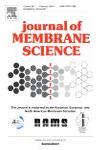版权所有:内蒙古大学图书馆 技术提供:维普资讯• 智图
内蒙古自治区呼和浩特市赛罕区大学西街235号 邮编: 010021

作者机构:Nanjing Tech Univ Coll Mat Sci & Engn Nanjing 210009 Jiangsu Peoples R China China Acad Engn Phys Inst Chem Mat Mianyang 621900 Peoples R China Nanjing Tech Univ Jiangsu Collaborat Innovat Ctr Adv Inorgan Funct Nanjing 210009 Jiangsu Peoples R China Univ Cambridge Dept Mat Sci & Met Cambridge CB3 0FS England
出 版 物:《JOURNAL OF MEMBRANE SCIENCE》 (膜科学杂志)
年 卷 期:2019年第573卷
页 面:425-438页
核心收录:
学科分类:081704[工学-应用化学] 07[理学] 0817[工学-化学工程与技术] 070304[理学-物理化学(含∶化学物理)] 08[工学] 0703[理学-化学]
基 金:National Natural Science Foundation of China China Scholarship Council (CSC) Priority Academic Program Development of Jiangsu Higher Education Institutions (PAPD) Postgraduate Research & Practice Innovation Program of Jiangsu Province [KYCX17_0989]
主 题:Microporous polymer Ultrathin membrane Thin film composite (TFC) Gas separation Interfacial polymerization
摘 要:Microporous polymers possessing good processability and low cost show promising applications for large-scale industrial membrane separation. The relatively low gas selectivity and physical aging of microporous polymer membranes are current challenges which become more serious for ultrathin membranes. Crosslinking is an effective way to improve gas selectivity and physical aging resistance of glassy polymers, and the cross-linked ultrathin membranes can be directly produced by interfacial polymerization (IP). However, there are only a few reports of IP formed microporous polymer membranes, and the reported gas separation performance is not satisfying. In this work, ultrathin microporous polyarylate (PAR) membranes were prepared by IP of 5,5 , 6,6 -tetrahydroxy-3,3,3 ,3 -tetramethylspirobisindane (TTSBI) and trimesoyl chloride (TMC). The crosslinking structure, molar ratio of TTSBI to TMC (n((TTSBI))/n((TMC))) in PAR, and membrane thickness characterized by zeta potential measurements, X-ray photoelectron spectroscopy and scanning electronic microscope were optimized by adjusting IP parameters such as pH value of aqueous phase that decides the hydrolysis of both TTSBI and TMC in IP, and the concentrations of TTSBI and TMC. The microporous structures of PAR characterized by CO2 adsorption are highly relevant to the n((TTSBI))/n((TMC)) in PAR. The resulted membranes exhibit CO2 permeance in a wide range of 100-2115 GPU with CO2/N-2 selectivity of 45-21 that is a remarkable improvement in gas separation performance of IP formed microporous polymer membranes and also shows significant advantages over other reported ultrathin microporous polymer membranes. In addition, the membranes also exhibit excellent stability, and only 29% decrease in CO2 permeance was observed after 180 h aging. This work provides an effective strategy to fabricate high-performance and stable microporous polymer membranes by IP, which is expected to push the particle applications of microporous poly